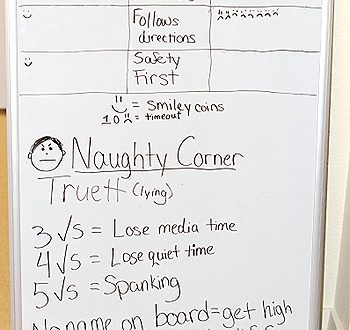Scaling Down the Homework -Pt 2
School has finally wrapped up for the year, and we, as parents, are left to contemplate what WE learned from the school year. My husband and I finally got the homework situation figured out with our daughter once the school year was already drawing to a close. If you missed the first installment of Scaling Down the Homework, you should read it before continuing.
Modifying the Homework: Our Failed Attempt
My husband and I were fed up with our 8 year old daughter spending all of her non-school hours either confined to her room doing homework or sleeping. We never saw her, outside of reminding her to stay focused and stay on task. She had no play time, chore time, or family time.
Hannah’s teacher required 30 minutes of reading nightly. Hannah watched the clock constantly, dreading the reading and waiting for the time to be up. It never seemed to matter how much she liked the book (she always chooses her own reading material). When the timer went off, she didn’t want to finish reading the chapter. She didn’t want to finish reading the paragraph. She didn’t even want to finish reading the sentence she was on!
She’d wait out the timer, not reading, but flipping the pages back and forth, looking at the cover, then the back, then flipping through the pictures in the book. We’d catch her and then she’d go back to reading, begrudging every word.
Michael and I had a long brainstorming session and came up with some ideas for change. We both love to read, so having a child that is not an avid reader takes a bit of adjustment for us. It was obvious that Hannah’s attention span for reading silently was NOT 30 minutes long, and confining her to reading was not getting her to read more, but to get more creative at passing the time without getting caught. She wasn’t getting 30 minutes of reading practice per night, that’s for certain!
Idea #1: Reduce the reading time to 15 minutes per night. At parent-teacher conferences, we shared our decision with the teacher and stated very plainly that she would not be forced to read 30 minutes a night anymore. The same methods just do not work for every child.
Idea #2: Hannah’s reading would be aloud, and she could read to either of us or her baby brother. That way we’d know she was actually reading and would be able to hear her progress.
Idea #3: Hannah could read aloud in the car on the way to school or home from school if she wanted. This would reduce the amount of homework she had to do once we got home.
For the first few days it seemed to be working well. The all-night homework was a little bit shorter (she still had to write a 1 1/2 page reading response, study 2 separate spelling word lists, and do math each night). We knew Hannah was getting a solid 15 minutes of reading each night. It was less than 30 minutes, sure, but she never really read for the whole 30 minutes anyway!
Suddenly, Hannah didn’t want to read in the car anymore. I gave her the choice for how to spend our driving time, and she said she’d rather do homework at home. She really dislikes reading aloud and so we let her go back to reading silently, now for 15 minutes instead of 30. We had the same problem on our hands: she dawdled and fidgeted until her reading time was up.
Our brilliant ideas were not a success. We were back at square one and somewhat discouraged by our failures. We had tried so hard to make life easier for our daughter, to free up her time, to eliminate some of the drudgery of her homework. Why hadn’t it worked? Enforcing the new methods would have been one approach, but it was clear that the changes were not right. They were great ideas for a different child, but they were not great for Hannah.
Realizing that made all the difference. Suddenly, the epiphany came and the truth was apparent! In Scaling Down the Homework (Part 3), read about our paradigm shift, our drastic change to the homework situation and why it worked.

